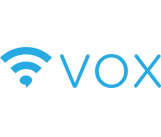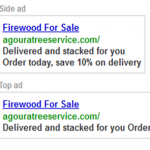Conversion Rates
One of the best things about internet marketing is that you can measure the ROI of your campaign more accurately than you can with traditional media. The data you view, most often supplied by Google, can show you how many people are on your site now, come to your site over time, pages they view most, devices they view from, their geographical location, the site they were on before, search terms they typed in, how long they were on, and which page they exited. There are many other metrics as well. The purpose of these metrics is to help educate you about your website, your audience, and your product or service. That education manifests itself in something called actionable data. This data allows you to make informed decisions about your business to improve conversions. Conversion rates are the relationship between views, clicks, and orders or emails collected. With detailed reports we can determine exactly what that conversion rate is and then work towards improving it. The goal is to increase business and to lower the cost per customer acquisition. One real world example featured a client selling apparel targeted to women. We looked at the number of visitors to the site, total orders, devices used, best sellers, and abandoned carts or virtual shopping carts with orders that were never submitted. The first thing we noticed was the traffic. More than 34,000 visitors per day came to site and most visited using a mobile device. Next we noticed that of all the orders almost 33% were left in abandoned carts. We also tracked total sales and low and behold noticed that most orders were for ‘plus’ sized merchandise. So we knew walking in that of the people planning to purchase a product only 66% completed their order. Losing 33% of sales was a huge red flag and in fact prior to our Digital Asset Review the client was unaware of the losses. To improve conversions we had to look more closely. What we found was that site speed was slow, the website was not mobile, and the models did not reflect the customers. To address the low conversion rate we:
- Â Moved the client to a commercial grade hosting solution with redundant servers capable of processing hundreds of simultaneous transactions
- Built a mobile e-commerce website integrated with the main website and
- Targeted and embraced the plus-sized audience with social media posts and new plus sized models
This was not an inexpensive project for the client but the program was making and losing good money. The net result was a near 40% increase in sales over twelve months with more customer engagement, more emails collected, more sales made, many less abandoned carts, and the highest conversion rate in the history of client’s merchandise program.

















